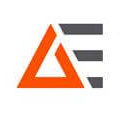Which Thermocouple Alloy (TYPE) Should You Use for Temperature Measurement?
投稿 6月 12, 2019 によって Advanced Energy Editor
Thermocouples are the most commonly used temperature sensors in the United States and the 2nd most popular sensor used in Europe. ASTM E230/E230M-17 recognizes 9 thermocouple types, and there are more. Some types are obsolete and only used in older installations, such as Types L and U, while others are newer, like “P” (Platinel II) and are just becoming established.
Why are there so many types of thermocouples? They have all been developed to either solve a problem or to improve upon an older alloy.
There are three “families” of thermocouples: Base metal (J, K, T, E, N), Noble metal (R, S, B, P), and Tungsten (G, C, D). The base metal thermocouples are inexpensive, have good temperature ranges and are all commonly used. The noble metal (Platinum) types are expensive and are typically used for very high-temperature measurements in Oxygen or Inert atmospheres, while the Tungsten family of thermocouples are used for very high temperatures in Inert, Reducing or Vacuum atmospheres.
The Base Metal Group Thermocouples
Type J is the oldest thermocouple and has a large installed base. It has a good range up to 760°C. One leg is Iron and is subject to corrosion in moist or Oxygen atmospheres. It can be used in Reducing, Vacuum and Inert atmospheres. Standard limits of error are ±2.2°C or 0.75%, with Special limits of error (SLE) of ±1.1°C or 0.4%.
Type K is the most common thermocouple type. It has a broad operating range up to 1260°C and has good corrosion resistance. Do not use in low Oxygen or reducing atmospheres at higher temperatures. Typically use is above 550°C in Oxygen or Inert atmospheres. Standard limits of error are ±2.2°C or 0.75% and SLE of ±1.1°C or 0.4%.
Type T is the most accurate thermocouple and has excellent corrosion resistance. Its temperature range is limited to 370°C and is good with wet gasses and moisture. It is also used for cryogenic applications. Because of its accuracy it is commonly used in the food industry where accurate measurements are very important. Standard limits of error are ±1.0°C or 0.75% with SLE of ±0.5°C or 0.4%.
Type E is another broad range thermocouple similar to Type K but with improved accuracy and higher output. It can be used in the same applications as type K, Oxygen or Inert environments. Standard limits of error are ±1.7°C or 0.5% with SLE of ±1°C or 0.4%.
Type N thermocouple alloys were developed to avoid some of the issues that Type K has in low Oxygen environments. It has the same range and applications as type K. Standard limits of error is ±2.2°C or 0.75% and SLE of ±1.1°C or 0.4%.
The Noble Metal Group Thermocouples
Types R and S are used for very high temperature measurements in Oxygen or Inert atmospheres. Their range is from 0° up to 1480°C. Platinum should be insulated only with ceramic as metal will contaminate it. Standard limits of error are ±1.5°C or 0.25% and SLE of ±0.6°C or 0.1%.
Type B thermocouples are also for high-temperature measurements in Oxygen or Inert atmospheres. They have a lower accuracy and a higher top range than R or S – up to 1700°C, but because of very low output are typically not used below 870°C. Standard limits of error is ± 0.5% and SLE is 0.25%.
Platinel II (unofficially Type P) is made from 100% noble metals and as such has superior corrosion resistance and accuracy compared to types R & S. They are often used for engine exhaust and kilns. Their range is up 2300°C in inert atmospheres, which makes them very versatile. Their accuracy to 1300°C is ±0.2mV.
The Tungsten Group Thermocouples
There are three common types for tungsten thermocouples; Types G, C, and D. Type C is the only ASTM-recognized Tungsten thermocouple type. All three can be used up to 2315°C. Tungsten alloys are brittle and can not be used at temperature with Oxygen present. Ceramic insulators are typically used to insulate the bare wire. Caution must also be used when handling these thermocouples, as the alloys are very brittle. Tungsten thermocouples are about the only choice for high temperature vacuum environments, or Hydrogen atmospheres.
ASTM E2846 – 14 Thermocouple Types
| Code | Alloys | Rec. Max Temp | Recommended Atmospheres | Notes |
| BASE Metal | ||||
| J | Iron/Constantan | 760°C | R/V/I | Good for low temp/Cryogenic use; Good Stability |
| K | Chromel/Alumel | 1260°C | O/I/V/R | Will drift below 550°C; Limited – avoid low Oxygen and Sulfur |
| T | Copper/Constantan | 370°C | O/R/V/I | Good with wet gasses/moisture & Cryogenic |
| E | Chromel/Constantan | 870°C | O/I | More accurate than K; Avoid Sulfur. Good Stability |
| N | Nicrosil/Nisil | 1260°C | O/I/V/R | Less drift at high temperatures than K; Stabile at lower temperatures. |
| NOBLE Metal | ||||
| R | Platinum-13%
Rhodium/Platinum |
1480°C | O/I | Only insulate with non-metallic ceramics; easily contaminated at high temperatures |
| S | Platinum-10%
Rhodium/Platinum |
1480°C | O/I | Only insulate with non-metallic ceramics; easily contaminated at high temperatures |
| B | Platinun-30%
Rhodium/Platinum |
1700°C | O/I | Only insulate with non-metallic ceramics; easily contaminated at high temperatures |
| P (Not ASTM) | Platinel 5355-
Platinel 7674 |
2300°C | O/I/ Dry H | Good stability with thermal cycling; Avoid Phosphorus and Sulfur |
| TUNGSTEN Alloys | ||||
| C | Tungsten-5% Re-
Tungsten-26% Re |
2315°C | V/I/H | Burns in oxygen at high temperature; Alloys are brittle |
Interested in learning more about TEGAM thermocouples? See our thermocouple thermometers and thermocouple probes to learn more. Please contact us with questions or queries on thermocouple types or any other question related to our precision digital thermometry products.
